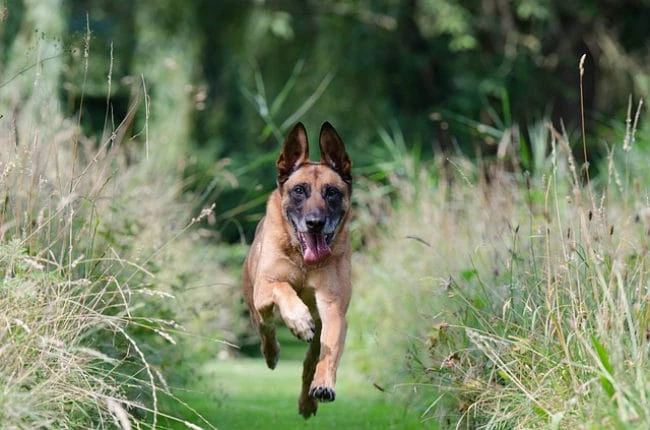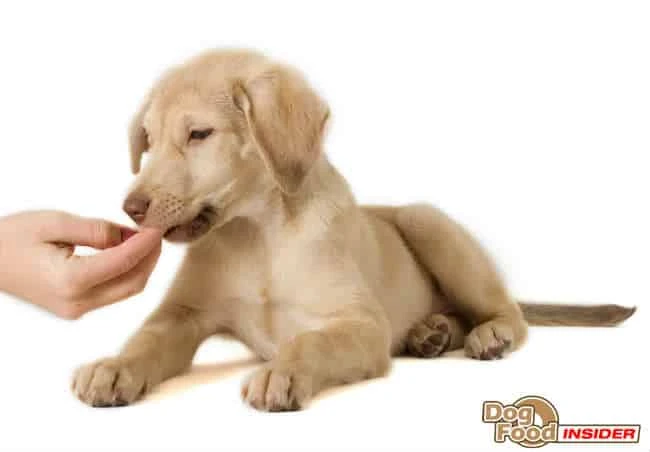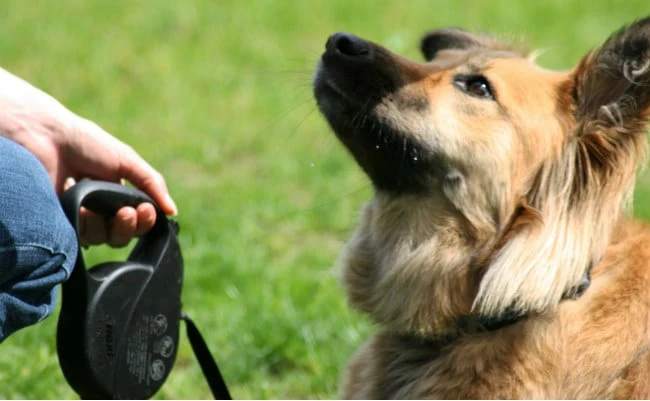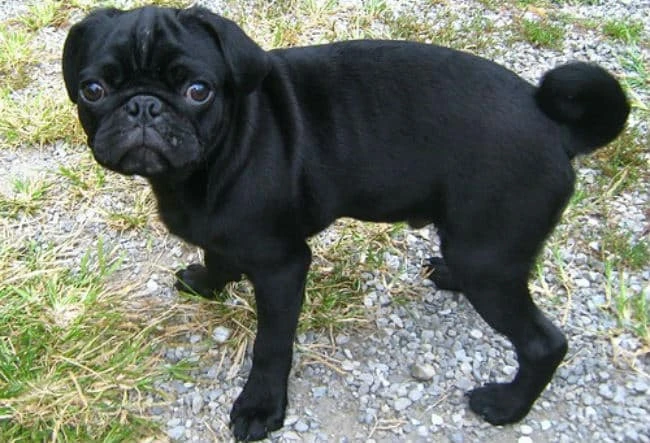Puppy Crate Training, Crate Training Puppies, Crate Training a Dog
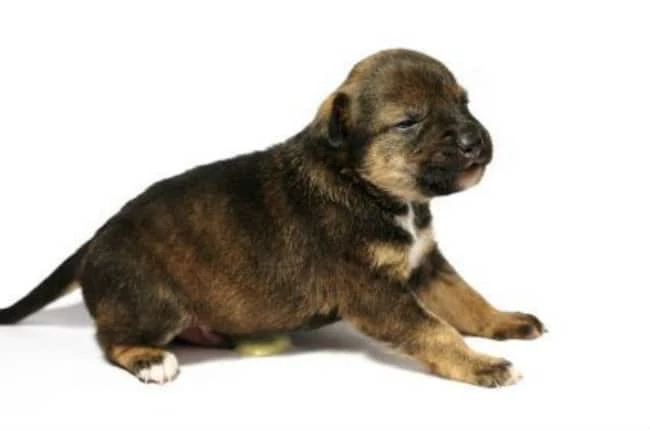
Puppy crate training is about teaching your puppy to love his crate and is one of the first steps when crate training a puppy
We have provided a step by step guide including all the best dog training tools, techniques, tips, methods and devices to make crate training a dog, puppy or puppies nice and simple.
Start from the beginning from buying the right crate for your puppy to leaving him in his new den happy and comfortable.
Read our guide and soak up all the information to make the crate training process easy, effective and fun for you and your puppy.
Choosing the right Crate.
When you start your puppy crate training regime you need start by choosing the right crate.
Below we have listed the steps you need to take when choosing the best crate for your puppy.
1. For house training reasons your puppy should be able to stand,stretch and be able to turn around in his crate – but don’t make the crate too big.
2. If you purchase a crate that is too big then puppy crate training becomes difficult because your puppy will be able to pee in his crate and stay dry.
3. Crate training a puppy can become very expensive if you intend to purchase a different size crate for every stage of your puppy’s growth – instead buy a crate with a handy divider.
This way you can make the crate smaller or bigger as your puppy gets older.
4. There is a reason why the crate should not be too big – your puppy will naturally want to keep his bedding dry (its in his instinct) so a smaller crate will encourage him not to mess his crate.
5. When your puppy has gained better control of his bladder he will gain more privileges – this includes space.
6. It is up to you whether you buy a wire or plastic crate when crate training your puppy.
Plastic crates are easy to clean and carry around and also come in numerous colors – but they can obstruct what your puppy can see.
If your puppy is a chewer then consider a wire crate as it is slightly more durable.
If you would like more information on house training puppies or dogs, check out our section on house training a puppy and for your adult dog you may find our section on house training a dog more useful.
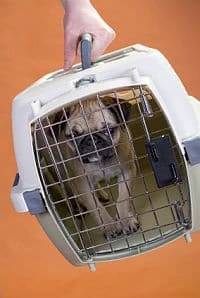
A light and durable crate made from plastic is easy to carry and comfortable for all small breeds.
It’s important when choosing the right crate that you remember your puppy may not always be small and cuddly and may grow too big for his first crate.
Take some time when choosing the right crate and make sure that you consider your puppy’s comfort before your own.
Where to put the crate.
1. It’s important when crate training a puppy or crate training a dog that you place the crate with the family.
2. A dog is a pack animal and your puppy will want to be with you and your family throughout the crate training process.
3. If you decide to dismiss your puppy and his crate to some far off part in the House – not only is this cruel – but he will learn unwanted dog or puppy behavior problems and this may cause issues in later life.
4. Be consistent, when puppy crate training. I can’t stress this enough consistency is vital.
5. It’s fine during the crate training regime if your puppy in the same room as you.
Quick tips.
A Crate is a training tool not a prison
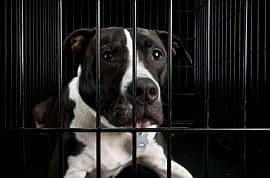 1. Remember a crate is a great house training tool, and not a prison.
1. Remember a crate is a great house training tool, and not a prison.
It enables your puppy to be safe when you are unable to supervise him. Believe me when crate training a puppy or crate training a dog you will need to watch him like a hawk.
2. We are going to make the crate training process fun – so it does not matter if he has never set eyes on a crate.
3. Never ever use the crate as a punishment tool as he will start to associate the crate with bad things and this will make the whole training regime pointless – your puppy needs to want to enter his crate.
Step 1
1. Ok so we have bought the crate and decided where to put it – it’s now time to teach your puppy to use and love his crate.
2. You need to decide on the cue that you and your family are going to use when you want your puppy to go in his crate.
Use the same cue every-time.
We use “crate time” as it is short and snappy – but you can use “bed time”.
It does not matter – just make sure you use the same cue every single time, otherwise it will confuse your puppy during the training process.
3. When you are unable to watch and supervise your puppy he should be in his crate. Making dinner – then it’s time for his crate, going out – crate.
It may seem like your puppy is spending allot of time in his crate at first – but the better your puppy gets at controlling his bladder the more time he can spend out of his crate.
4. Make sure that your puppy is always safe in his crate – make sure that he can’t choke on any toy’s.
Step 2.
1. When crate training a dog or puppy you need to start by encouraging your puppy to use his crate. Start this part of the crate training process gradually.
Don’t just throw your puppy in the crate – start very slowly.
2. Start by leaving the crate door open and put some of your puppy’s favorite treats in there.
When your puppy goes into the crate after the treats – do not close the crate door (he is not ready.) Praise him!
3. When you are preparing his meals put his meal in the crate and let your puppy go in to eat his meal – do not close the door on him.
One of the dog training methods that we use is to let the puppy see the meal and let him get excited about eating it – this will make him want to get his food – thus entering the crate.
Keep the crate door open when he is eating his food.
Step 3.
1. If your puppy is going into to his crate quite happily then thats great -if you are still struggling to encourage your puppy to go in his crate then spend more time on Step 2. When crate training a puppy or dog it is better to get it right than to move forward too quickly.
2. Put a treat in your hand and show it to your puppy.
Then give him the crate training cue that you decided on “crate time” or whatever you chose.
Use the treat as a lure to get him to go in his crate.
When using dog training commands make sure that you use the same command for each task
3. When your puppy follows the lure (treat) into the crate give it to him and really praise him. Do this five or six times a day.
4. Now your puppy is happily going into his crate you now start closing the door behind him. Leave him for a few minutes and then let him out.
Only let him out if he is behaving – do not let him out if he is whining or barking – if you do then you are teaching him that if he barks he will get what he wants!
Always make sure that his behavior is good when you let him out – and reward and praise.
5. Now you can start increasing the time that your puppy spends in his crate. Start with 5 – 10 minutes and gradually increase the time to 30 mins.
6. Puppy crate training can be hard work so make sure that you give your puppy plenty of breaks.
7. You can now start building up the time your puppy spends in his crate.
Vary the routine though – put him in his crate when you are toddling around the House.
If you put him in his crate every-time you go out your puppy will start to associate his crate with negative things.
Note: If you and your puppy are struggling with any part of the training process- go back to the previous step and master that first before continuing.
Step 4. – Final Stage in the Puppy Crate Training Process
1. At this point in the puppy crate training regime your puppy should be running into his crate quite happily – every-time you give him his cue.
2. Now you need to stop using the lure (treat) to get your puppy into his crate – you need to be only using the dog training command or cue that you chose i.e. “crate time”.
3. To achieve this you need to point or gesture to the crate with your “crate time” cue or training command as if you had a treat in your hand.
Your puppy will know that you have a treat in your hand – because he can smell it!
5. You are only using the same gesture that you have used every-time – your puppy has been learning your body language from the start!
6. Now that your puppy has gone into his crate, shut the door and give him his treat through the gaps in the crate.
By doing this your puppy has realized that although you may not always have a treat – you will always reward him for good dog or puppy behavior.
